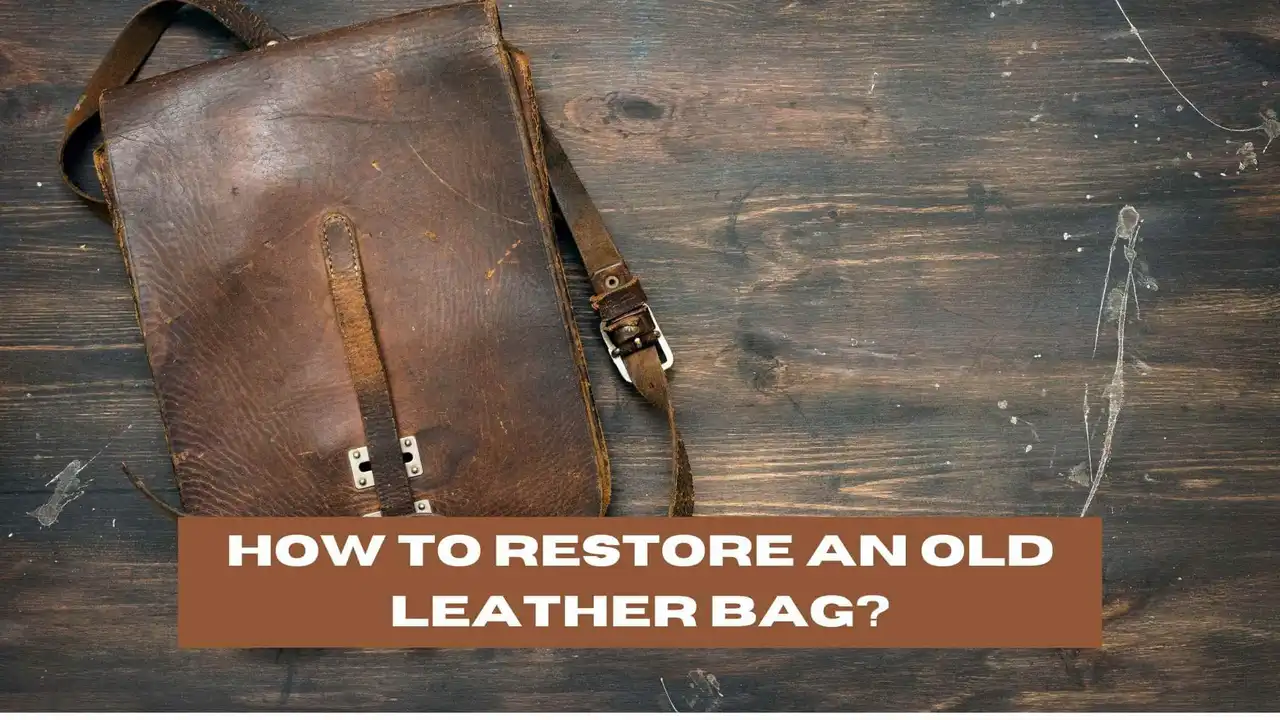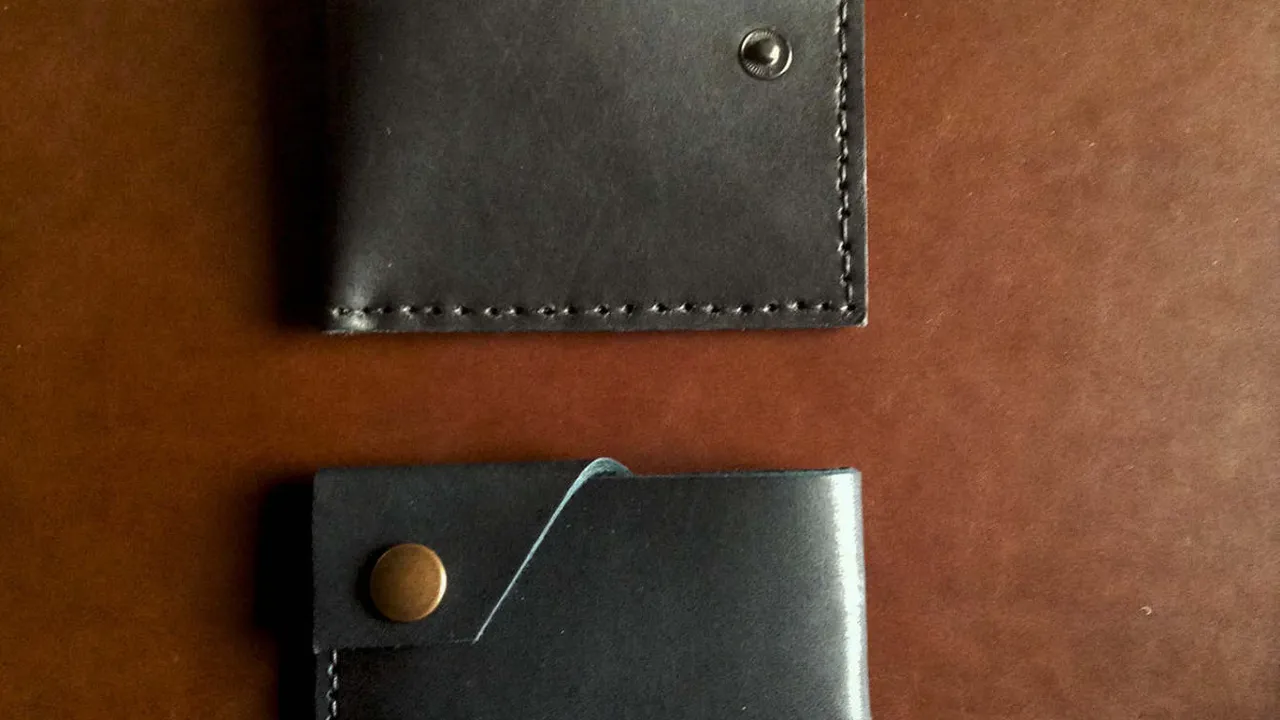Reviving Old Handbags: Restoration Tips and Tricks
Reviving your beloved handbags can feel like giving them a new lease on life. Whether it's a vintage find or a well-loved everyday essential, restoring a handbag requires patience, the right techniques, and sometimes, the perfect products. This guide provides comprehensive restoration tips, tricks, product recommendations, and detailed usage scenarios to help you breathe new life into your cherished handbags. Let's get started on this rewarding journey of handbag revival!

Understanding Handbag Materials for Effective Restoration
Before diving into any restoration project, it's crucial to identify the material of your handbag. Common materials include leather, suede, canvas, and synthetic fabrics. Each material requires different cleaning and restoration methods. For instance, leather needs specialized leather cleaners and conditioners, while suede demands gentle brushing and stain removal techniques.
Leather: This is probably the most common and arguably the most durable material for handbags. There are various types of leather, including full-grain, top-grain, and genuine leather. Each has its own characteristics and maintenance needs.
Suede: Known for its soft, velvety texture, suede is more delicate than leather and requires special care to prevent damage and maintain its appearance.
Canvas: Often used for casual and tote bags, canvas is durable and easy to clean, but it can be prone to stains and fading.
Synthetic Fabrics: These materials, like nylon or polyester, are often water-resistant and easy to maintain, making them a practical choice for everyday bags.
Essential Tools and Products for Handbag Restoration
Having the right tools and products is essential for a successful handbag restoration project. Here's a list of must-haves:
- Leather Cleaner: Specifically formulated to remove dirt and grime without damaging the leather.
- Leather Conditioner: Helps to moisturize and protect leather, preventing it from drying out and cracking.
- Suede Brush: A soft-bristled brush designed to gently clean and restore the nap of suede.
- Microfiber Cloths: Lint-free cloths for wiping and polishing surfaces.
- Mild Soap: For cleaning canvas and synthetic fabrics.
- Stain Remover: Choose a stain remover appropriate for the material of your handbag.
- Leather Dye or Polish: For restoring color and shine to leather bags.
- Needle and Thread: For minor repairs to seams and straps.
- Scissors: For trimming loose threads and fabric.
- Leather Glue: For reattaching loose pieces of leather.
Cleaning Leather Handbags: A Step-by-Step Guide
Cleaning a leather handbag involves a few simple steps:
- Empty the Bag: Remove all items from the handbag and shake out any loose debris.
- Wipe Down the Exterior: Use a dry microfiber cloth to wipe down the exterior of the bag, removing any surface dirt.
- Apply Leather Cleaner: Apply a small amount of leather cleaner to a clean microfiber cloth and gently rub it onto the leather in a circular motion. Avoid over-saturating the leather.
- Wipe Away Excess Cleaner: Use a clean, damp microfiber cloth to wipe away any excess cleaner.
- Apply Leather Conditioner: Once the leather is dry, apply a small amount of leather conditioner to a clean microfiber cloth and rub it into the leather in a circular motion.
- Buff the Leather: Use a clean, dry microfiber cloth to buff the leather to a shine.
Product Recommendation: Leather Honey Leather Conditioner. This product is highly rated for its ability to moisturize and protect leather, preventing cracking and extending the life of your handbags. It retails for around $20-$25 on Amazon and other online retailers. Use it after cleaning to keep your leather supple and prevent drying.
Usage Scenario: After cleaning your leather handbag with a leather cleaner, apply a small amount of Leather Honey to a microfiber cloth and gently rub it into the leather. Allow it to absorb for a few minutes, then buff with a clean cloth. This will keep your leather looking its best.
Restoring Suede Handbags: Gentle Cleaning Techniques
Suede requires a more delicate approach than leather:
- Brush the Suede: Use a suede brush to gently brush the nap of the suede, removing any loose dirt and debris.
- Remove Stains: Use a suede eraser or a specialized suede stain remover to gently remove any stains. Avoid using water or harsh chemicals, as they can damage the suede.
- Protect the Suede: Apply a suede protector spray to help prevent future stains and water damage.
Product Recommendation: Kiwi Suede and Nubuck Protector. This spray creates a protective barrier on suede, preventing stains and water damage. It retails for around $10-$15 at most shoe stores and online. Use it after cleaning to protect your suede handbag from the elements.
Usage Scenario: After cleaning your suede handbag with a suede brush, spray it evenly with Kiwi Suede and Nubuck Protector. Allow it to dry completely before using the bag. This will help prevent future stains and water damage.
Cleaning Canvas Handbags: Simple and Effective Methods
Canvas bags are generally easier to clean:
- Empty the Bag: Remove all items from the handbag and shake out any loose debris.
- Spot Clean Stains: Use a mild soap and water solution to spot clean any stains. Gently rub the stained area with a soft cloth until the stain is removed.
- Wash the Bag: If the bag is heavily soiled, you can wash it in a washing machine on a gentle cycle. Use a mild detergent and wash the bag inside out.
- Air Dry: Allow the bag to air dry completely before using it. Avoid using a dryer, as it can damage the fabric.
Product Recommendation: OxiClean Versatile Stain Remover. This product is excellent for removing tough stains from canvas bags. It retails for around $10-$15 at most grocery stores and online. Use it to pre-treat stains before washing your canvas bag.
Usage Scenario: Before washing your canvas bag, mix a small amount of OxiClean with water to form a paste. Apply the paste to any stains and let it sit for a few minutes. Then, wash the bag as usual. This will help remove even the toughest stains.
Repairing Minor Damage: Stitching and Glueing
Minor repairs, such as loose stitching or detached straps, can often be fixed at home:
- Loose Stitching: Use a needle and thread to re-stitch any loose seams. Choose a thread that matches the color of the original stitching.
- Detached Straps: Use leather glue to reattach any detached straps. Apply a small amount of glue to both surfaces and press them together firmly. Allow the glue to dry completely before using the bag.
Product Recommendation: Barge All-Purpose Cement Glue. This glue is strong and durable, making it ideal for repairing leather and fabric handbags. It retails for around $10-$15 at most hardware stores and online. Use it to reattach straps, handles, or other loose pieces.
Usage Scenario: If a strap on your handbag comes loose, apply a small amount of Barge All-Purpose Cement Glue to both the strap and the bag. Press them together firmly and hold them in place with clamps or tape until the glue is dry. This will create a strong and lasting bond.
Restoring Color and Shine: Leather Dye and Polish
If your leather handbag has faded or lost its shine, you can restore its color and luster with leather dye or polish:
- Clean the Leather: Clean the leather thoroughly before applying any dye or polish.
- Apply Leather Dye: Apply a small amount of leather dye to a clean microfiber cloth and rub it onto the leather in a circular motion. Be sure to choose a dye that matches the original color of the bag.
- Apply Leather Polish: Once the dye is dry, apply a small amount of leather polish to a clean microfiber cloth and buff the leather to a shine.
Product Recommendation: Angelus Leather Dye. This dye is available in a wide range of colors and is easy to apply. It retails for around $10-$15 at most craft stores and online. Use it to restore the color of faded leather handbags.
Usage Scenario: If your leather handbag has faded, apply Angelus Leather Dye to a microfiber cloth and rub it into the leather in a circular motion. Allow it to dry completely, then buff with a clean cloth. This will restore the color and shine of your bag.
Protecting Your Restored Handbag: Prevention is Key
Once you've restored your handbag, it's important to protect it from future damage:
- Store Your Bag Properly: Store your handbag in a dust bag or pillowcase to protect it from dust and scratches.
- Avoid Overfilling: Overfilling your handbag can stretch the leather and damage the seams.
- Protect from Water: Avoid exposing your handbag to water or rain. If it does get wet, dry it immediately with a soft cloth.
- Regular Cleaning: Clean your handbag regularly to remove dirt and grime.
Comparing Handbag Restoration Products: Making the Right Choice
Choosing the right products for handbag restoration can be overwhelming. Here's a comparison of some popular options:
| Product | Material | Price | Pros | Cons |
|---|---|---|---|---|
| Leather Honey Leather Conditioner | Leather | $20-$25 | Excellent for moisturizing and protecting leather, prevents cracking. | Can leave a slightly greasy residue if over-applied. |
| Kiwi Suede and Nubuck Protector | Suede | $10-$15 | Creates a protective barrier against stains and water damage. | Needs to be reapplied regularly. |
| OxiClean Versatile Stain Remover | Canvas | $10-$15 | Effective at removing tough stains. | Can be harsh on delicate fabrics. |
| Barge All-Purpose Cement Glue | Leather and Fabric | $10-$15 | Strong and durable bond. | Can be messy to apply. |
| Angelus Leather Dye | Leather | $10-$15 | Wide range of colors, easy to apply. | Can be difficult to match the exact color. |
Where to Buy Handbag Restoration Products
Handbag restoration products can be found at a variety of retailers, including:
- Amazon: Offers a wide selection of products at competitive prices.
- Target: Carries a selection of popular cleaning and restoration products.
- Walmart: Offers affordable options for basic cleaning and repair.
- Craft Stores: Such as Michael's and Jo-Ann Fabric and Craft Stores, offer a variety of leather dyes and repair supplies.
- Shoe Stores: Often carry specialized cleaning and protection products for leather and suede.
:max_bytes(150000):strip_icc()/277019-baked-pork-chops-with-cream-of-mushroom-soup-DDMFS-beauty-4x3-BG-7505-5762b731cf30447d9cbbbbbf387beafa.jpg)






